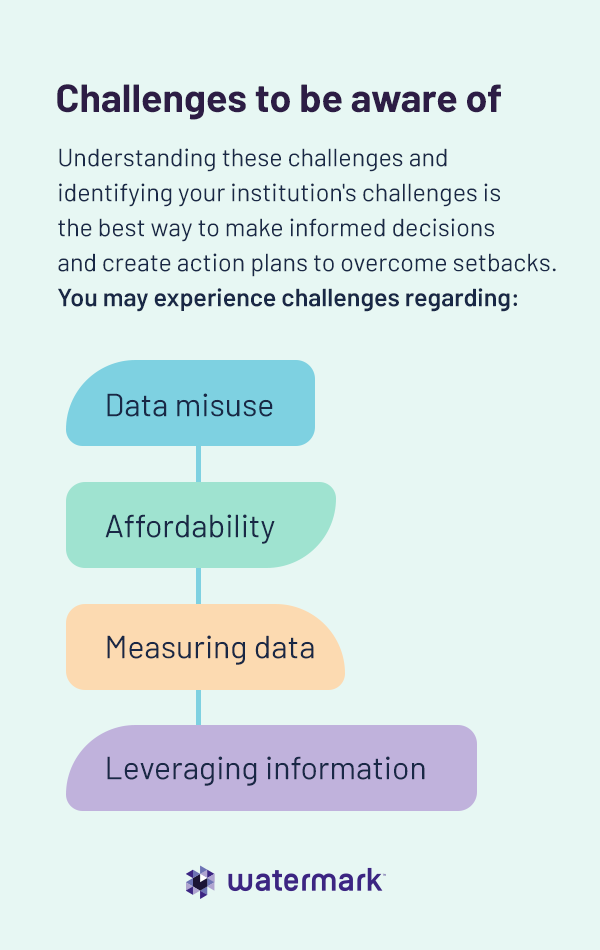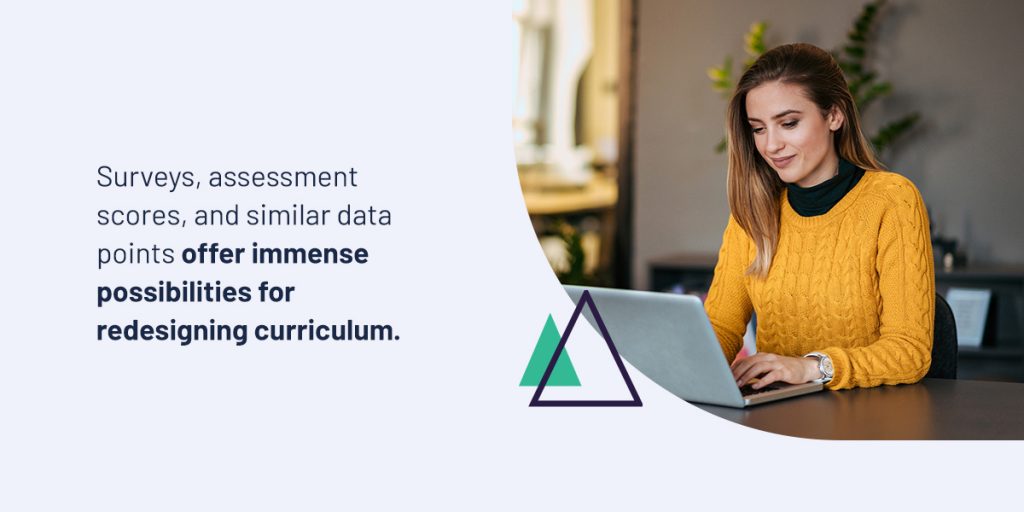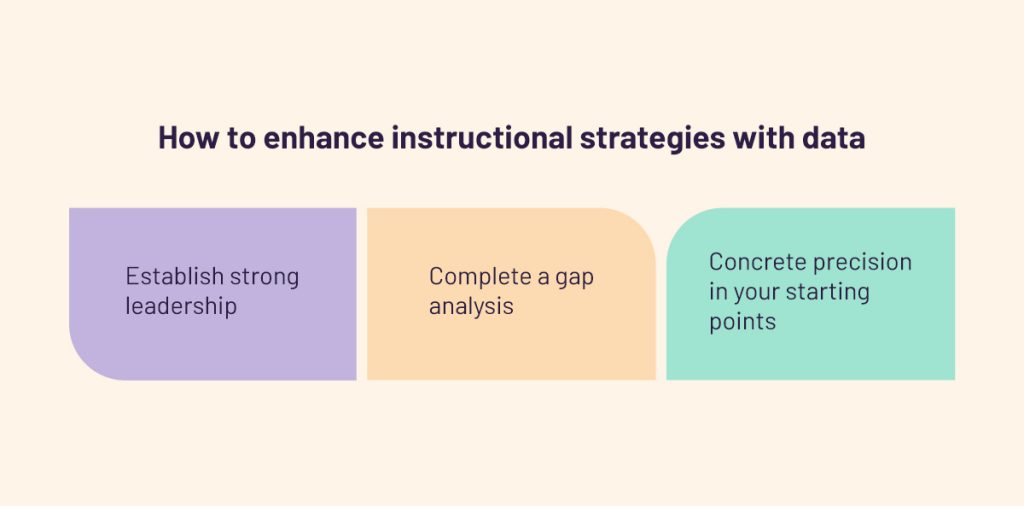Analytics has become a growing hot topic in higher education. This information can aid decision-making and drive student success, resource allocation, faculty performance, and more. However, some educational institutions face challenges in gathering and using analytics. Data is only powerful when you know how to leverage it, making it essential to understand the resources, time, and technology you must dedicate to obtaining this information. Although higher education institutions are collecting more data now than ever before, using this information to drive change on campus is the only way to make analytics useful.
Here, you can learn more about analytics, including what areas to target, challenges to be aware of, and how you can improve faculty performance with your insights.
What do analytics refer to?
Understanding analytics is the first step to effectively leveraging this information. Analytics relate to nearly every facet of your institution, and they span beyond simple metrics. Rather, this term often refers to the data collection and solution creation process and involves using predictive models, statistical analysis, and explanatory models to gain insights for acting on complex issues. When you understand analytics and how to leverage them, you can drive change, such as creating early intervention strategies, improving educational programs, and boosting student success and graduation rates.
Analytics often start with a central strategic question that relates to a problem you aim to identify or solve and provides a foundation for collecting data to support your objectives. When you evaluate your analytics, you must look beyond the facts and figures directly in front of you. You must make predictions according to current trends, present actionable findings, and create new questions to support your central foundation. You will likely need to create several custom reports to gather a comprehensive view of the situation and need to pull additional resources and team members to form an effective strategy for tackling those tasks.
Targets and benefits of data analytics
There are several benefits to using analytics effectively, and many outcomes support multiple initiatives. For example, improving faculty performance can boost student performance. Depending on how you use your data, you can experience benefits like reducing costs, lessening faculty workloads, increasing enrollment and retention, and more. Consider leveraging your data to understand and aid in:
- Identifying student behaviors and demographics.
- Helping students graduate and learn effectively.
- Lowering education costs.
- Reducing administrative costs.
- Improving administrative services.
- Becoming more transparent.
- Boosting faculty performance.
- Student recruitment.
- Resource optimization.
- Raising faculty satisfaction and boosting morale.
- Crafting long-term institutional changes.
- Forming a more inclusive and collaborative culture.
Although you can leverage analytics across departments, having a clear focus is essential when obtaining data. If you collect an abundance of unrelated information, you may encounter challenges when trying to identify patterns and create comprehensive and actionable solutions. Evaluate your institution’s current pain points to determine where to focus. You can leverage analytics to target an array of facets:
- Strategic plan progression
- Faculty promotion and tenure
- Student outcomes and progress
- Budgeting and finance
- Enrollment management
- Student learning
- Facility use
- Alumni advancement
- Teaching performance
- Faculty research performance
Challenges to be aware of

Like any data set or process, data analysis has several challenges. Understanding these challenges and identifying your institution’s challenges is the best way to make informed decisions and create action plans to overcome setbacks. You may experience challenges regarding:
- Data misuse: Using data incorrectly or referring to inaccurate information can be a significant problem for higher education institutions. Data access, quality, standardization, and ownership can all impact whether you can leverage reliable, accurate, and relevant information. For instance, you may face challenges when determining which academic years to refer to, which programs to target, and when to use real-time data over past trends. Although each of these pieces can be vital, understanding when to refer to this information is key for making solution-based decisions to meet student needs and drive change across campus.
- Affordability: Cost and affordability are common pain points for higher education institutions. As colleges and universities look for ways to reduce costs, decision-makers may question whether investing in new technology and processes will be cost-effective for their institution. You may encounter costs surrounding training, staffing, and technology implementation. You may also find it challenging to allocate current resources to a new process. Although data analytics can aid in cost reduction and help you form strategies for improving your bottom line, making the initial investment can be a point of contention for some teams.
- Measuring data: There are many ways to measure useful data. For example, evaluations, surveys, reviews, assessments, transactional data, and system-generated behavioral data can all generate valuable insights. However, you may find that each method is most effective in unique circumstances, meaning you may need to be selective in your methods, depending on the information you need to find.
- Leveraging information: You may face pain points when determining how to leverage your information. Collecting data for the sake of obtaining it will not improve your institution. You can have hundreds of reports at your fingertips, but they will only be useful if you know how to break them down, look for patterns, and form comprehensive solutions.
Improving faculty performance with analytics
Analyzing student performance data, assessments, evaluations, and other forms of data analytics can provide a deep insight into classroom improvement opportunities. Data analytics can empower instructors to align their instructional strategies with curriculum maps and objectives to meet student needs. Regular monitoring and tracking will be essential for determining which strategies are most beneficial for your institution. Generally, here’s how your faculty can improve performance with data analytics:
1. Historical data drives understanding
Historical data can depict current student skills and where comprehension breakdowns occur within a class or program. This information can showcase opportunities for additional student support and highlight progress rates for students across departments. Instructors can use this data to create a comprehensive course roadmap detailing subsequent lessons and content.
Using this information can also make the curriculum mapping process easier and better align instructional strategies with institutional goals. Instructors can test these methods by administering evaluations and assessments to gather qualitative and quantitative information. Using Outcomes Assessment Projects, your faculty can tighten accreditation standards and drive improvement. A combination of tests, essays, course assignments, and feedback opportunities can reflect learning progress and empower students to vocalize which methods they most enjoy and which need redesigning.
2. Creating new lesson plans

Data is critical for developing new and innovative lessons. Surveys, assessment scores, and similar data points offer immense possibilities for redesigning curriculum to heighten student interest and align instructional methods with student and institutional goals.
Students can express what they enjoyed and where they faced challenges through feedback, and instructors can identify where they may need to dedicate more time to a topic through formative assessments and assignments. Over the following few learning periods or semesters, instructors can reflect on student scores and feedback to determine whether the new methods are improving student engagement and success or if they need to revamp their strategies.
Additionally, instructors can use this data to make comprehensive programs. Faculty can use academic data to determine which skills students have already learned and which they still need to obtain. This process can enhance faculty collaboration while lighting the way for a meaningful academic program that expands on previous knowledge rather than relaying the same information course after course or making significant jumps students are not prepared to face.
3. Making personalized learning paths
Data analytics can support personalized learning, which can boost student engagement and success. Analyzing student data can help you identify and engage with at-risk students using various intervention methods to get them back on track.
Advanced technologies can monitor trends in real-time and alert you when a student is veering off-course. This predictive data empowers faculty to reach out to students before they’ve fallen too far behind. Instructors can schedule meetings with these students and offer helpful resources to support the student’s learning.
This information can also measure student engagement by tracking participation, interaction, and task completion. Leveraging this data can empower instructors to adjust their teaching strategies to foster a positive learning environment and maximize student engagement. Along with improving your student satisfaction levels, this strategy can also increase retention rates and boost student persistence at your institution.
How to enhance instructional strategies with data

Your faculty has the opportunity to directly impact student learning paths and outcomes by leveraging data. Implement these elements to enhance instructional strategies:
- Create visible goals: Creating visual representations of achievements, assessments, and historical data can help faculty articulate goals and support student growth and success. Faculty can share these representations with students to help them visualize their improvement and progression path. This collaborative process can also make learning goals more transparent for students, aligning them with your initiatives and instilling a sense of ownership over their academic journey.
- Complete a gap analysis: Conducting a curriculum gap analysis allows teams to see where breakdowns occur so they can restructure courses and content to address knowledge and skill deficiencies. This information depicts what students have already learned and the path they took to obtain these skills, empowering instructors to implement new strategies for more robust student understanding. Instructors can determine where they need to intervene and provide more resources or content to ensure students stay on track.
- Concrete precision in your starting points: Ensuring precision significantly impacts success. Students can often choose the courses they pursue and in what order. This individualized approach allows students to move at their preferred pace and develop skills and knowledge at different rates, which means each student is at a different starting point when they begin a new course. Identifying and understanding these starting points through team collaboration, curriculum mapping, and similar ensures precision and empowers instructors to identify each student’s skills and knowledge. This precision can help instructors better allocate resources and recognize when students need additional support.
Other ways you can use data at your institution
The power of data spans far beyond the use cases outlined here. You can also use faculty performance analytics data to:
- Inform reviews: By leveraging more information regarding program success, course enjoyment, student engagement, and similar data, you can easily inform faculty reviews and make informed decisions regarding compensation, tenure, and other facets. Using this data in reviews can also help your faculty visualize strengths and weaknesses and have a direct look at their impact on students and your institution, creating an excellent opportunity for growth through feedback.
- Complete accreditation reports: Accreditation peer reviews rely on data to highlight plans for program growth, measure learning outcomes, and determine whether efforts are successful. Leveraging faculty data can highlight individual accomplishments and simplify the accreditation process.
- Track student engagement: Students are valuable sources for providing information about course effectiveness, instructor performance, and more. Your students have a direct relationship with the challenges and breakdowns on your campus, providing excellent opportunities for you to develop a deeper understanding of pain points and how to address them to improve student engagement and success.
Strengthening your analytics
Despite the importance of data analytics, many institutions limit data to reporting capabilities or view analytics as a replacement for reporting processes. While some overlap can exist between these facets, it’s important to recognize the differences when defining your processes. Your analytic efforts should ask strategic questions and aid in developing plans to answer these questions using powerful insights.
While reporting involves gathering and presenting data, analytics consists of using this data to inform decision-making. Reporting aids data analytics by providing the foundation for identifying trends but doesn’t address why trends are occurring or depict future solutions. Understanding this difference is vital for strengthening your analytics process and ensuring you invest in the proper tools and resources to make data analytics meaningful.
Access valuable insights with Watermark
At Watermark, we empower higher education institutions to access critical insights and make long-lasting changes on campus by providing a central hub for collaboration, accessing and sharing data, identifying trends, streamlining workloads, and more. We simplify data collection and empower teams to leverage advanced tools for enhanced decision-making and drive continuous improvement.
With Watermark Faculty Success, you capture a holistic view of faculty information and use critical insights to improve their performance and enhance instructional strategies. You can also leverage Faculty Success with our other solutions for a complete suite of advanced tools to access insights and drive change. We make it easier to maximize your impact on student retention and success and leverage data to build a more powerful curriculum.
We proudly serve higher education decision-makers and leaders, allowing us to be your one-stop shop for institutional change and success. Our solutions empower deans, provosts, and similar leaders to understand what’s happening on campus, in classrooms, and throughout institutional processes so they can capture a comprehensive picture and use data to form lasting solutions. See how our solutions work together by requesting a demo of our suite.
















































































































































































































































































































































































































